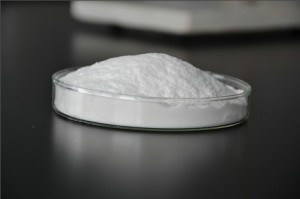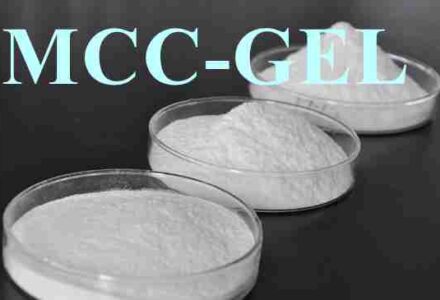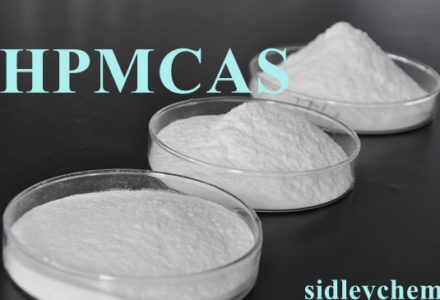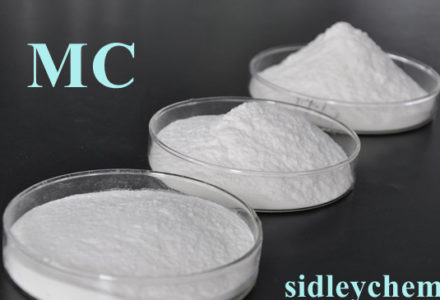Sodium Carboxymethyl Cellulose (CMC)
Sodium Carboxymethyl Cellulose (CMC)
Sidley Chemical Co.,LTD is a manufacturer of Sodium Carboxymethyl Cellulose, If interesting it, please don’t hesitate contact us. E-mail: [email protected]
Sodium carboxymethyl cellulose (CMC) is a cellulose derivative, an ionic cellulose gum, and owing to its unique thickening, suspending, adhesion, and water retention properties, is widely used in various industrial fields.
According to the different purity, Sodium carboxymethyl cellulose is in the appearance of white or yellowish powder and soluble in cold and hot water. Sodium carboxymethyl cellulose is divided into a variety of models depending on the degree of substitution, solution viscosity and the purity. Heating Sodium carboxymethyl cellulose solution, the viscosity of Sodium carboxymethyl cellulose decreases with increasing temperatures. As long as the temperature does not exceed 50 ℃, this effect is reversible, because kept at higher temperatures for a long time, the alkaline substances in the solution can cause the degradation of Sodium carboxymethyl cellulose.
The solution viscosity remains normal in a wide range of pH values but the most stable in the range of pH 7-9. As the pH value decreases, the solution will be acidified. Sodium carboxymethyl cellulose will be gradually changed from the salt type into the water-insoluble acid type and precipitated from the solution. When the pH value is below 4, most of the salt type changes into the acid type, forms a three dimensional network structure and precipitates out. Generally speaking, the higher the DS value of Sodium carboxymethyl cellulose is, the better the compatibility with salts will be. Adding salt into the Sodium carboxymethyl cellulose solution can have better effects than dissolving in salt water.
Sodium carboxymethyl cellulose is generally divided into 3 grades depending on the purity: the food high-purity grade (with a content more than 99.5%), the industrial grade (with a content more than 90%), and crude products (with a content more than 65%). According to the viscosity (molecular weight), there are 3 types: high viscosity (with the 1% solution viscosity of 5000-8500 Pa·S), medium viscosity (with the 1% solution viscosity of 1000-5000 Pa·S), and low viscosity (with the 1% solution viscosity of 5-1000 Pa·S). Therefore, Sodium carboxymethyl cellulose has many varieties suitable for requirements of various applications.
| Film-Forming Effects |
Papermaking surface sizing; Glial cosmetics; Gel medicines, plasters and ointments; Textile sizing |
Thickening and Suspending Effects |
Yogurt, beverages; Toothpaste, hair shampoo; Ceramic paste; Face lotions; Pharmaceutical detergents, emulsion; Depressants in mining flotation |
| Stabilizing Effects |
Control agents against recontamination of washing powder; Frozen dairy products; Salad dressings; Hair shampoo |
Fluid Loss Controlling Effects |
Drilling mud; Starch adhesives; Copper paper; Protein food |
Applications of Sodium carboxymethyl cellulose in the Food Industry
Related post: Effects of Sodium carboxymethyl cellulose on the Production of Ice Cream
Related post: Applications of Sodium carboxymethyl cellulose In Ice Cream
Related post: Study on Effects of Hydroxypropyl methyl cellulose and Sodium carboxy methyl cellulose on the Properties of Gluten-free Bread
Sodium carboxymethyl cellulose is used as an additive in food, with thickening, suspending, emulsifying, stabilizing, film-forming, acid resistance and other functions. It can replace the role of guar gum, gelatin, agar, sodium alginate and pectin in food production, and is widely used in the modern food industry, such as cold products, solid beverages, juice, jam, yogurt drinks, condiments, instant noodles, baked products, and meat products.
In yogurt, Sodium carboxymethyl cellulose can prevent the aggregation and precipitation of milk protein, make it uniformly dispersed and suspended, maintain the stability of food quality, extend the shelf life of food, and adapt to the commonly used sterilization processes such as UHT and pasteurization. The recommended dosage is 0.3% -0.5%.
Used in ice cream, it can prevent the growth of ice crystals, improve the expansion rate, resistance to melting, shaping, and the taste; in instant noodles, it can increase the toughness of noodles and boiling resistance; in biscuits and pancakes, it enables to have good formability, smooth surface and not easily broken; in bread and cakes, Sodium carboxymethyl cellulose can control the viscosity of paste, improve the water retention and storability of bakery products.
Compared with other similar products, it has such advantages as fast dissolution speed, good fluidity of the dissolved solution, uniformly distributed molecules, relatively large bulk specific gravity, high acid resistance, high salt tolerance, high transparency, less free celluloses and less gels.
Toothpaste -Grade Sodium carboxymethyl cellulose
Sodium carboxymethyl cellulose is mainly used as a thickener in toothpaste, enables the toothpaste to have a certain consistency, the paste into stripes, with a good frame, not collapsing when attached to the toothpaste, not getting dilute, so that the paste is smooth and delicate.
1. The products in our company have good acid tolerance and mildew resistance, and good compatibility with other raw materials in the toothpaste;
2. The water solubility and water-retaining capacity are strong, making the paste not separate from oil and water;
3. It has suitable viscosity and thixotropic properties, easy to disperse and swell in the paste production, and easy for filling production;
4. The colloid-protecting, suspending and emulsifying abilities are strong.
Ceramic-Grade Sodium carboxymethyl cellulose
Related Post: Effects of Sodium Carboxymethyl cellulose on the Performance of Ceramic Slurry
Sodium carboxymethyl cellulose can be used in the ceramic body, glaze slurry and fancy glaze. In the ceramic body, Sodium carboxymethyl cellulose can be used to improve the shaping of mud materials, facilitate the shaping of green body, increase the flexural strength of green body, and is a good enhancing agent; in the glaze slurry and fancy glaze, Sodium carboxymethyl cellulose can be used as a binder and plays the role of suspending, de-agglomeration and water retention.
1. Applications in the Ceramic Body
With small amount, the plasticity of mud materials and the flexural strength of raw materials can be increased significantly; the loss on ignition is good, with no residue after ignition; the suspending and dispersing properties are strong, preventing raw material particles from coagulation.
2. Applications in the Ceramic Glaze Slurry
The dispersion and performance of protective colloids are excellent, making the glaze slurry in a stable dispersion state; it can effectively improve the surface tension of glaze, prevent water diffusing from the glaze into embryoid body, and increase the smoothness of the glaze surface; under the condition of a small amount, it can effectively regulate the rheological property of glaze slurry, easy for glazing; it can improve the binding properties of glaze, significantly improve the strength of glaze surface, and prevent the glaze from peeling; the delicateness of glaze surface is high and the glaze slurry is stable.
3. Applications in the Ceramic Fancy Glaze
The resistance to acid and alkali is good, and the penetrability through the screen mesh is good, effectively reducing the number of rubbing the mesh and reducing the chromatic aberration; the rheological property is good and printing is smooth, with no insolubles.
Mining-Grade Sodium carboxymethyl cellulose
Related Post: Mechanism of Sodium Carboxymethyl Cellulose Inhibiting Gangue Minerals
1. In the mining industry, Sodium carboxymethyl cellulose is the binder of pellet and the inhibitor of flotation, a raw material of the binder for the forming of mineral fines. The binder is an indispensable ingredient in the preparation of pellet, can improve the properties of wet bulb, dry bulb and firing pellets, and has good adhesion and pellet forming property. The green pellet produced has good antiknock properties, as well as relatively high compressive and falling strength of dry and wet bulbs, while improving the grade of pellets.
2. Sodium carboxymethyl cellulose is also the modifier in the flotation process, mainly used for silicate gangue inhibitors for the inhibition of lead in the separation of copper and lead, and sometimes used as the dispersing agent of mineral mud.
(1). Applications In the Pellets
Good pellet forming and water controlling properties; good dispersion and high wet-bulb strength; not easy deformation of pellet; good dry-bulb strength; high bursting temperature and strong ability to control the release of water inside the pellet; uniform distribution of pellet size; smooth pellet surface; and good metallurgical performance.
(2). Applications In the Flotation
Good water solubility and strong inhibiting ability; improve the concentrate grade and obtaining better beneficiation indicators; reducing the amount of agents and the consumption of raw materials.
Paper-Grade Sodium carboxymethyl cellulose
In the paper industry, Sodium carboxymethyl cellulose is used for the preparation of the coatings of coated paper, and can be used as the wet end additives and surface sizing agent. Our company provides different CMC products for papermaking to meet different customer needs.
Sodium carboxymethyl cellulose of Other Industrial Grades
Sodium carboxymethyl cellulose is widely used, adaptable, and an indispensable raw material in many industrial fields. In the synthetic detergent industry, it is one of the best active additives, with emulsifying, thickening, homogenizing and protective colloid effects; in the coatings industry, it is the thickener and film-forming agent, can make the product storage stable, rheological property good and easy for mechanical construction, and helps to improve the flexibility and gloss of coatings; in the welding electrode industry, it is the lubricant and gas generating agent,with such characteristics as extruding performance, lubricity, and good resistance to shedding; in the battery industry, it is the binder, thickener, and dispersing agent; in the textile industry, it is the sizing agent, textile finishing agent, and in the printing paste, the thickening, emulsifying, and suspending agents.





